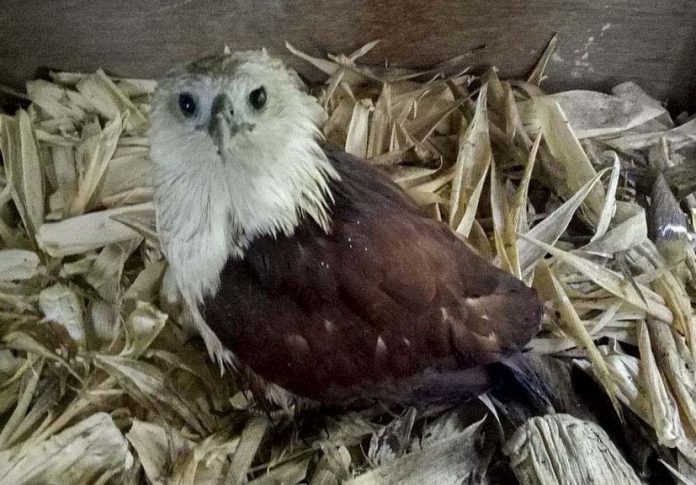The Department of Environment and Natural Resources in Davao region (DENR-11) commended a member of the Philippine National Police (PNP) in Malita, Davao Occidental for his heroism by saving a weak “lawin”.
SPO1 Jeffrey Bugaoisan saved a Brahminy Kite (Haliastur indus), locally known as “lawin” in Barangay Kidalapong National Road.
Bugaoisan said that while he was on his way for duty, he saw a boy carrying the said raptor while walking along the national road.
“At first, I was not sure if it was an eagle or not but I never hesitated to ask the boy for the bird obviously needs help and a safe place to stay until such time it regains its strength,” he said.
He further said that the boy found the bird very weak near a fish pond last January 16, 2017 in Sitio Manga, Barangay Kidalapong, Malita.
“After taking care of the bird for four days, my wife took the initiative to call the DENR so we could properly turn-over the bird to them,” he added.
As soon as the call was made, a team from DENR-XI’s Provincial Environment and Natural Resources Office (PENRO) Davao Occidental together with PO2 Rickreun Herana and PO1 Beethoven Dudero immediately went to Bugaoisan’s house for inspection and for proper turn-over of the raptor.
According to PENRO’s OIC Chief for Forest Management Service Laureano T. Quijano, the said raptor will be turned-over to the Philippine Eagle Center for it has the proper facilities to take good care of it.
The Brahminy Kite is one of the medium-sized raptors (bird of prey), with a white head and beast. The rest of its body is a striking chestnut brown. The very tip of its short tail is white, and its wings are bored, with dark ‘fingered’ wing tips. Its legs are short and not feathered, and the lemon yellow coloured bill is strongly hooked. It sails on level wings along shorelines and mudflats (http://www.birdsinbackyards.net/).
Brahminy Kite species has an extremely large range, hence it does not approach the threshold for Vulnerable despite the fact that the population trend appears to be decreasing. Rather, this species is evaluated as Least Concern by the International Union for Conservation of Nature (IUCN). (PR)







